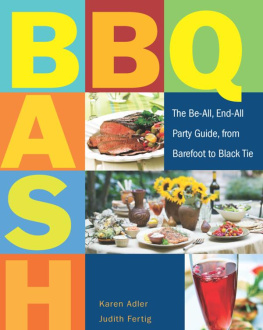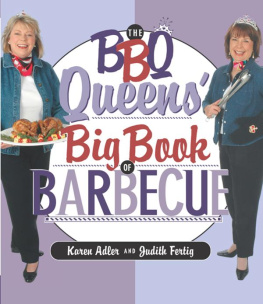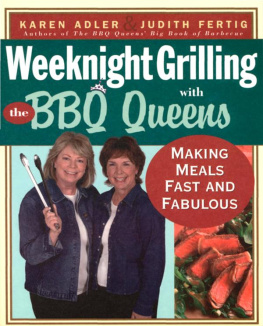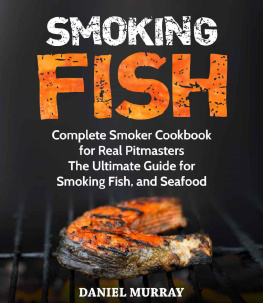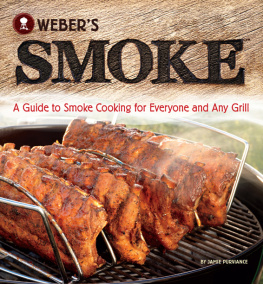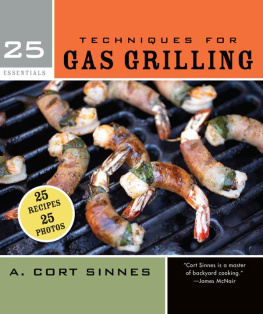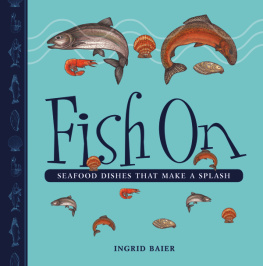Thanks to Judith, who cracks the whip and gets our projects done.
From Judith:
Thanks to Karen, who takes her time and then pulls some great material out of her hat at the last minute.
Introduction
The Native American technique of planking has been around for centuries, and avid grillers have recently embraced this old-school way of cooking. As authors of more than 24 cookbooks, including a whopping 13 on the subject of barbecue, and with our Ph.B. degrees (Doctor of Barbecue Philosophy) from the Kansas City Barbeque Societys Greasehouse University, we want to show you the tremendous Wow! factor of planking. Backyard cooks (and indoor cooks too!) enjoy doing it, and everyone loves the taste of the foodits a very simple way to get loads of compliments.
Planks of all kinds are readily available across the country at barbecue shops, hardware stores like Lowes, grocery chains like Kroger and Whole Foods Markets, and gourmet and kitchenware stores. Target even sells already-planked salmon, ready for the grill, in its seafood case. Crate & Barrel, Sur La Table, and Williams-Sonoma also offer an assortment of planks, and there are hundreds of online retailers selling planks. It is evident that planking is now in the mainstream.
Planks come in many different shapes and sizes, from large rectangular to individual-serving-size square planks, and from bark-ringed crosscut oval planks to 2-inch-thick baking planks. They come from wooded areas of our country from Maine to Washington, and each of the many varieties of wood lends its own distinct smoky flavor to food.
We use planksthicker baking planks and thinner grilling planksfor cooking outdoors or indoors. The first time we used a baking plank was for our cookbook Fish & Shellfish, Grilled & Smoked (The Harvard Common Press, 2002). We were demonstrating a new recipe, Planked Prawns with Barnaise Butter, at Smoke n Fire, a barbecue store in Kansas City. We loved the indentation in the baking plank because it held the butter sauce on the plank. We served it with crusty bread to sop up the awesome sauce that had acquired a nice smokiness from the wood. Since then weve used all kinds of planks, both outdoors and indoors, and so weve included outdoor and indoor instructions for every recipe in this book.
We present many different techniques and variations for those of you who dont mind a little flameand also for those who prefer to play it safer and plank indirectly, avoiding flare-ups on the grill. We even teach you how to plank and smoke at the same time for the ultimate depth of wood flavor. So read on and have fun.
The Essentials of Planking
Planking is simple. You choose a hardwood plank and soak it in water for at least 1 hour before cooking. You place the food on the plank, place the plank on the grill or in the oven, close the lid or door, and cook.
What you get is food that is blistered, scorched, or browned, imbued with the gently aromatic flavor of the plank where the food has touched it. That means that, for the most flavor, we like to plank foods that are flat or have a large surface area to come into contact with the plank. Planked food is attractive, taking on a burnished appearance and a brownish-red color thanks to the smoke of the grill, especially from a charcoal fire.
Like any essentially simple technique, planking has developed sub-techniques. Here are the six basics:
1. Indirect-heat planking requires a fire on one side of the grill, and no fire on the other. You put the planked food on the no-fire side. If you have a fear of fire, then this kind of planking might be most appealing to youalong with oven-planking. Planking over indirect heat requires the most time on the plank as well, so foods pick up more aromatic flavor with this technique.
2. Dual-heat planking calls for a hot fire on one side of the grill and a lower fire on the other side; you put the plank on the lower-fire side. This is a hurry-up method for those who want to speed things along with salmon or chicken, for which the high-heat method might not produce the best results.
3. Grill-planking is done when you want to put grill marks on a food before planking indirectly. You already have an indirect fire, so its a snap to grill a slice of eggplant, a breast of chicken, or a pork tenderloin on the direct side just until you have good grill marks. Then you simply put it on the plank and transfer it to the indirect side to finish cooking.
4. Plank-roasting or high-heat planking is used when you want to cook tender fruits, vegetables, or shellfish quickly and with more caramelized flavor. Place grilling planks directly over a hot fire (with a spray bottle of water handy). To plank-roast on an open brazier grill (one without a lid), simply tent a disposable aluminum pan over the planked food for the grill lid.
5. Smoke-planking is planking with a kiss of smoke, and is great for foods that you would like to imbue with a little smoke flavor. Add wood chips to the fire, either thrown directly over hot charcoal or placed in a smoker box on a gas grill. Let the wood begin to smolder, then plank away. Youll get the aromatic wood flavor at the bottom of the food with a literal top note of smoke.
6. Oven-planking is ideal when the weather is just too bad to go outside, or maybe just because its more convenientfor instance, if you plan to plank-roast. Oven-planking is usually done at around 350 to 400F, while plank-roasting calls for oven temperatures of 450 to 500F.
BUYING GRILLING AND BAKING PLANKS
Commercially packaged hardwood grilling planks are readily available in most towns and cities. Even if your town doesnt have a store that carries planks, youll find thousands of online sources if you go to Google.com and search for grilling planks. Planks can be reused until theyre either too charred or too brittle to support the weight of the food.
Different shapes and sizes of planks abound, from the traditional rectangular grilling planks to crosscut ovals to thick baking planks. Individual-serving-size planks may be 4 to 6 inches square or smaller rectangular planks. The most common rectan-gular planks are 12 to 14 inches long and fit in most commercial grills. If you plan to use the planks in your oven, they can be a little longer, usually about 16 inches. So measure the length of your grill racks or oven racks to know what size plank will work for you. Plank thickness can vary as well; the thicker your plank, the longer it will last.


